 |
Encyclopedia of Tours and Travel to West Bengal, featuring information on Fairs & Festivals, Wildlife, Excursion, Adventure and Weather of West Bengal. |
 |
 |
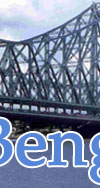 |
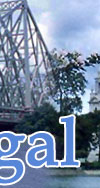 |
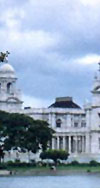 |
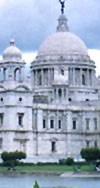 |
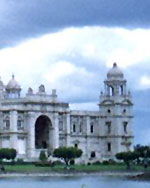 |
||
|
West Bengal

West Bengal is located in the northeastern part of the country. It is bounded on the north by Bhutan and the state of Sikkim, on the east by Bangladesh, on the northeast by the state of Assam, on the south by the Bay of Bengal, on the southwest by the state of Orissa, on the northwest by Nepal, and on the west by the state of Bihar. The alluvial plain in the south is watered by the legendary River Hooghly and its tributaries - Mayurakshi, Damodar, Kangsabati and the Rupnarayan. The Himalayan north, comprising the districts of Darjeeling, Jalpaiguri and Cooch Bihar are watered by the swift flowing rivers Tista, Torsa, Jaldhaka and Ranjit. Variations in altitude result in great variety in the nature and climate of West Bengal. From the northern highlands at the feet of the Himalayas to the tropical forests of Sunderbans, West Bengal is a land of myriad beauty, each region different from the other. Although in area West Bengal ranks as one of the smaller states of India, it is one of the largest in population. The capital is Calcutta, India's second largest city; other important cities and towns are Howrah, Asansol, Durgapur and Siliguri, Darjeeling, Kharagpur and Haldia. West Bengal has a single-chamber legislative assembly with 295 seats. The state sends 58 members to the Indian national parliament: 16 to the Rajya Sabha (Upper House) and 42 to the Lok Sabha (Lower House). Local government is based on 18 administrative districts. History
After the Mughals, history of Modern Bengal began with advent of European and English traders. Battle of Plassey in 1757 changed the course of history when the English first gained a strong foothold in Bengal and India. In 1905 it was partitioned to achieve some political returns but people’s growing movement under the auspices of the Congress led to the reunion in 1911. This triggered off hectic movement for freedom which culminated with Independence in 1947, and partition. After 1947, the merger of native settlement began which ended with its final reorganization in 1956 (as per Recommendation of the States Reorganisation Act, 1956) when some Bengali speaking areas of a neighbouring state was transferred to West Bengal. Society and Culture Bengalis have always fostered literature, art, music, and drama.
Bengali literature dates to before the 12th century. The Caitanya
movement, an intensely emotional form of Hinduism inspired by the
medieval saint Caitanya (1485-1533), shaped the subsequent development
of Bengali poetry until the early 19th century, when contact withthe
West sparked a vigorous creative synthesis. The modern period has
produced, among others, the Nobel prize-winning poet Rabindranath
Tagore (1861-1941), whose contribution still dominates the Indian
literary scene. Bengal also boasts of three other Nobel prize winners,
Mother Teresa, Amartya Sen and Satyajit Ray. Jamini Roy, Uday Shankar,
Bimal Mitra and Tarashankar Banerjee all belong to this culturally
rich land. The theatre is po Fish, rice and a plethora of sweets are Bengali specialities. Ace Bengali artisans work wonders with terracota horses, conch shells, clay models, leather, batik and wood work. Bengal handloomsarees with exquisitely woven borders also have a universal appeal. Durga Puja, coinciding with Dussehra in other parts of the country, rouses the state to a feverish pitch, with its preparations that touch the life of every Bengali. Kali Puja, festival of lights (Diwali), Dol Jatra (Holi), Ganga Sagar Mela at Sagar (January /February), the Muslim festivals of Id and Ramzan, Baisakhi - Bengal's New Year's day, Rabindranath Tagore's birth anniversary, Christmas and New Year are marked by typical abandon and devotion.
|
|||||||||||||||||||||||||||||||||||||||||||||||||||||||||
|
|||||||||||||||||||||||||||||||||||||||||||||||||||||||||
|
|||||||||||||||||||||||||||||||||||||||||||||||||||||||||
 pular,
and both amateur and professional performances are quite sophisticated,
traditional open-air performances, are popular in the countryside,
along with kavigan an impromptu duel in musical verse between village
poets. Traditional music takes the form of devotional and cultural
songs. The kathakata a religious recital based on folklore, is another
rural entertainment. Films offer yet another type of popular diversion,
and Bengali productions have earned national and international awards.
pular,
and both amateur and professional performances are quite sophisticated,
traditional open-air performances, are popular in the countryside,
along with kavigan an impromptu duel in musical verse between village
poets. Traditional music takes the form of devotional and cultural
songs. The kathakata a religious recital based on folklore, is another
rural entertainment. Films offer yet another type of popular diversion,
and Bengali productions have earned national and international awards.